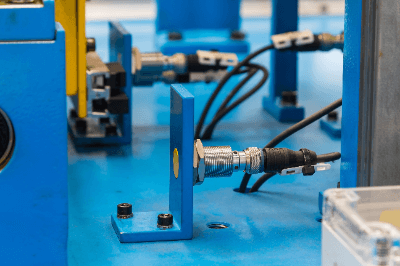What Is a Position Sensor?

Position Sensors are sensors used to detect and measure the location of an object or device.
They are used in a wide range of industrial applications such as automobiles, aircraft, and smartphones. They play a role in improving the operation and navigation of equipment by providing accurate location information.
Applications of Position Sensors
Position Sensors are used in a wide range of applications from industrial machinery to everyday life.
1. Vending Machines and ATM Equipment
Position Sensors are used in vending machines and ATM machines. They detect people standing in front of unattended equipment and control the on/off of the equipment’s display. They also prevent theft of the equipment by detecting the tilt of the equipment.
2. Automatic Door
Automatic doors are also useful in security. It is used from a security perspective to detect people and objects at automatic doors and, conversely, to detect trespassing in places where people should not be detected. From a security perspective, it may also be used for safe tilt detection.
3. Parking Lots
Position Sensors are also used in parking lots. They are used to position pallets (parking spaces) in mechanical parking garages and as sensors in multilevel parking garages.
They are also used to detect when the bar of a circuit breaker at the exit of a parking lot cannot shut off because it has been hit by a car or other object.
Principle of Position Sensor
Position Sensors use optical, magnetic, or other media to detect position.
Optical Position Sensors and Ultrasonic Position Sensors emit light or ultrasonic waves as a medium and detect reflections by objects to provide feedback. Capacitive Position Sensors, for example, detect inductance and provide feedback.
Position Sensors based on these principles are selected according to their characteristics, accuracy, and field of application. Reliable position information can also be obtained by combining multiple sensors; “inertial navigation systems” that combine GPS and inertial sensors are used to improve the accuracy and update speed of position information.
Types of Position Sensors
There are many different types of Position Sensors. Optical, magnetic, and ultrasonic types are typical examples.
1. Optical Position Sensor
Optical Position Sensors use optical methods to measure position. A common example is an encoder, a device that converts position information from rotational or linear motion into a digital signal. 3D positioning technology using image sensors is also widely used.
2. Magnetic Position Sensor
Magnetic Position Sensors detect position information by changes in magnetic fields. Hall effect sensors and magnetic inductive sensors are available and are suitable for use in environments where magnetic materials exist. They are characterized by their resistance to dirt and vibration.
3. Ultrasonic Position Sensor
Ultrasonic Position Sensors use sound waves to measure distance and position information. They are used in applications such as obstacle detection for robots and automobiles, and water level measurement.
How to Select a Position Sensor
Since a wide variety of Position Sensors are available on the market, it is necessary to select the right one based on the characteristics of each sensor.
1. Measurement Accuracy
The required accuracy of Position Sensors depends on the object to be measured and other factors. If high accuracy is required, optical or electrical sensors are suitable. On the other hand, if accuracy is not so important, magnetic or ultrasonic sensors may be the choice.
2. Operating Environment
The suitable sensor also depends on the operating environment. Magnetic sensors are suitable for environments with a lot of dirt and vibration. If water or transparent objects need to be detected, ultrasonic sensors are appropriate.
3. Budget
The price range for Position Sensors varies depending on the type and performance. It is important to select the appropriate sensor for your budget. However, even inexpensive sensors may provide adequate performance with the appropriate settings and combinations.
Other Information on Position Sensors
3D Sensors Used in Motion Tracking
Position measurements with 3D Position Sensors are utilized in Motion Tracking systems. Motion tracking is used in a wide range of fields, including sports and medical fields, and is also used in the fields of VR and computer graphics. Motion capture digitizes the movements of people and expresses the facial expressions and movements of characters.